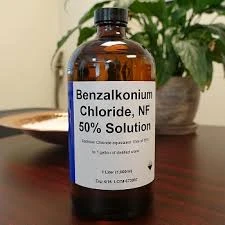Exploring the Applications and Safety of Methylisothiazolinone in Modern Industry
Understanding Me-Isothiazolinone A Multifaceted Chemical Compound
Me-isothiazolinone, or methylisothiazolinone (MIT), is a widely recognized chemical compound used primarily as a biocide and preservative in various industries. Its importance spans across household products, cosmetics, and industrial applications. However, it also raises certain health and environmental concerns that warrant careful examination.
Chemical Properties and Uses
Methylisothiazolinone is a synthetic biocide that falls within the isothiazolinone family. Characterized by its ability to inhibit the growth of bacteria, fungi, and algae, it is commonly used in water-based formulations.
In the personal care industry, MIT is often found in shampoos, conditioners, lotions, and other skin care products. Its effectiveness against microbial growth makes it an essential ingredient in maintaining the shelf life and safety of these products. Furthermore, it is employed in household cleaning products, paints, and adhesives, providing protection against unwanted biological contamination.
The compound is typically used in combination with its counterpart, methylchloroisothiazolinone (MCI), which enhances its preservative qualities. Together, they form a powerful tool in various formulations, ensuring both efficacy and safety for consumers.
Health Concerns
Despite its benefits, methylisothiazolinone has come under scrutiny in recent years due to its potential health hazards. One major area of concern is skin sensitization. Studies have indicated that MIT can cause allergic reactions in certain individuals, leading to dermatitis and other skin irritations. As a result, regulatory bodies in regions like the European Union have moved toward restricting its use in leave-on cosmetics, emphasizing the importance of consumer safety.
Additionally, some researchers have raised concerns about the effects of prolonged exposure to MIT. Studies have linked it to various respiratory issues when inhaled or absorbed through the skin. While the concentrations used in most consumer products are low, these potential risks have prompted calls for greater regulation and monitoring of its use.
Environmental Impact
me isothiazolinone

Beyond health concerns, the environmental implications of methylisothiazolinone have also been a subject of discussion. The compound is known to be toxic to aquatic life. If released into water systems, it can have deleterious effects on marine ecosystems, leading to a decline in biodiversity. Because of its widespread use in various products, there is a risk of accumulation in natural water bodies, raising alarms among environmentalists.
In light of these concerns, many companies are exploring alternative preservatives that are both effective and less hazardous. This trend highlights the growing awareness among consumers and manufacturers regarding the importance of sustainability and environmental stewardship.
Regulatory Landscape
As awareness of the risks associated with methylisothiazolinone has increased, regulatory bodies worldwide have started to act. The European Commission’s Scientific Committee on Consumer Safety (SCCS) has issued guidelines on the safe concentration levels in cosmetic products, particularly those that remain on the skin.
In the United States, the Environmental Protection Agency (EPA) includes MIT on its list of chemicals that require evaluation and scrutiny, leading to further studies on its health impacts. These regulatory measures underscore the need for transparency and accountability in chemical usage, especially in consumer-facing industries.
Conclusion
Methylisothiazolinone serves as a critical preservative in various sectors, ensuring product safety and longevity. However, with its usefulness comes the responsibility to be aware of its potential hazards. As consumer awareness grows, the demand for safer, more sustainable alternatives continues to rise.
The balance between efficacy and safety is pivotal for both manufacturers and consumers. Ongoing research and regulatory measures will play essential roles in shaping the future of methylisothiazolinone and its alternatives. Colleagues in the chemical and cosmetics industries need to engage in dialogue, share knowledge, and seek innovative solutions that prioritize health and environmental protection.
As the conversation surrounding methylisothiazolinone evolves, it underscores the broader need for responsible chemical management and consumer education in today’s increasingly environmentally conscious society.
-
Water Treatment with Flocculant Water TreatmentNewsJun.12,2025
-
Polymaleic AnhydrideNewsJun.12,2025
-
Polyaspartic AcidNewsJun.12,2025
-
Enhance Industrial Processes with IsothiazolinonesNewsJun.12,2025
-
Enhance Industrial Processes with PBTCA SolutionsNewsJun.12,2025
-
Dodecyldimethylbenzylammonium Chloride SolutionsNewsJun.12,2025





